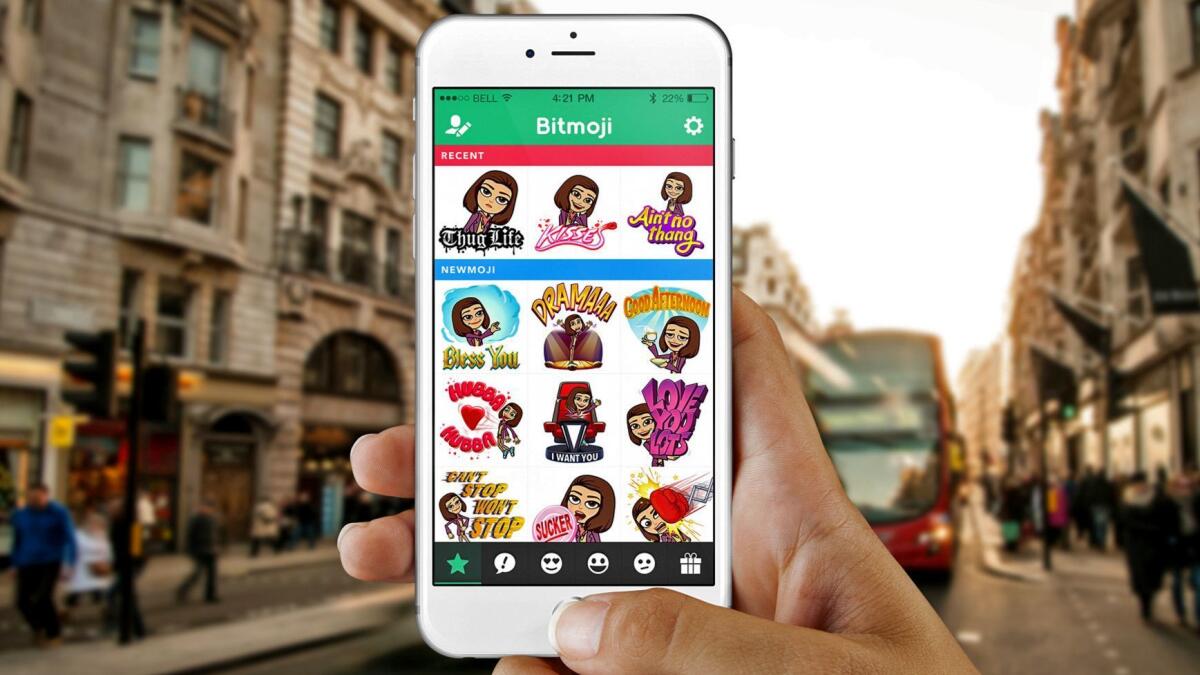Snapchat has changed through acquisitions, and it’s hunting for more people and tech to buy

Acquisitions propelled
And the newly public Snap Inc. isn’t slowing down.
A small team led by Steve Hwang, vice president of corporate development, is hunting for deals in software and hardware that can further reshape Snapchat or bolster its engineering team. Snap has gone after Kickstarter projects, emerging apps and struggling start-ups: Past purchases include augmented reality headset maker Vergence Labs, personalized cartoon app Bitstrips and things-to-do search app Vurb.
The acquisition team appears to have set few limits in what it will evaluate, how much it will pay and how often it will do a deal. Ad technology and augmented reality features are of obvious interest to the Venice company, which on Wednesday will issue its first earnings report. But Snap also has shown a willingness to learn about undisclosed new areas of technology, getting up to speed by taking back-to-back meetings with start-ups competing to develop such projects.
Scheduling a meeting with Snap may be difficult at times, but it’s not the fortress that is Apple. When Snap is ready to make an offer, the company isn’t hyper-aggressive in the pursuit and avoids bidding wars. But it can make an appealing pitch, with a $3-billion warchest and meetings on rooftop patios overlooking Venice Beach. Negotiations are looser than in partnership talks, where Snap is said to be stiffer on terms.
Snap’s corporate development team has earned a reputation for being thoughtful and reasonable in making deals, according to interviews with eight people who have engaged with them. Several spoke on the condition of anonymity because of nondisclosure agreements. Snap declined to comment.
“They know where they have leverage, and they don’t feel terribly bad if a deal doesn’t work out,” said one seller’s consultant.
Snap's key acquisitions




Though integrated into Snapchat, acquired teams have been allowed to maintain their existing offices in places such as Ukraine and Toronto. Snap now has an employee focused solely on settling in acquired companies.
Entrepreneurs have appreciated Snap’s transparency — for example, acknowledging before meetings more educational in nature that any purchase would be far off. When Snap has passed on making a deal, it’s taken the unusual step of offering specific feedback on what wasn’t a fit, whether it be technology, timing or another issue.
Snap staffers have been upfront about their inexperience. They don’t enter into a meeting with a start-up knowing everything about the firm, as Google’s and Facebook’s corporate development teams are known to do.
Hwang was an associate at law firm Cooley for three years before coming to Snap as director of legal operations. Dena Gallucci, another key figure on the corporate development team, came to Snap straight out of
Chief Strategy Officer Imran Khan worked on stock research on Wall Street. As an overseer of some of Snap’s ad sales efforts, Khan has been involved in deals such as last year’s acquisition of people from beleaguered ad tech start-up Flite. Chief Financial Officer Drew Vollero, formerly of toy maker Mattel’s strategy team, may be the most experienced.
The leaders of acquisition efforts at Apple, Amazon, Verizon and Uber are investment banking veterans, who may hold deeper knowledge about pricing deals and connections that could be key to back-channel negotiations. People with legal backgrounds run the corporate development departments at Google,
The youth of Snap’s corporate development group could be an asset in a different way — they ought to relate well to Snap’s mostly young users.
The youth of Snap’s corporate development group could be an asset in a different way — they ought to relate well to Snap’s mostly young users.
Frank Cordek, a director at investment bank Signal Hill, found Snap’s team in listen mode when he met them a year ago in a Venice conference room behind a camouflaged door.
“Most of these buyers, an Oracle or a Microsoft, have corporate development groups that have really mapped out the landscape,” Cordek said. “Snap hadn’t built out a strategy yet,” but their ability to “keep in touch with the audience is probably a positive thing.”
Leaning on Hwang and Gallucci also may reflect Snap Chief Executive
Spiegel has a hand in the department’s quirks too. Snap orders companies it has acquired and their shareholders to not announce or discuss deals. Investors who want to trumpet a big deal on their websites can’t even do so quietly. The same policy applies to start-ups in which Snap invests, rather than outright buys.
Spiegel likes new features to surprise users, and Snap has confirmed acquisitions after their technology has been launched on Snapchat. It’s unclear whether he can still maintain secrecy now that Snap, as a publicly traded company, must make regular disclosures.
Snap doesn’t buy companies for their users or revenue. In a strong reflection of Spiegel’s penchant for design and offbeat ideas, the company’s biggest acquisitions have rewarded entrepreneurs whom associates say displayed strong creativity. Such skills and vision of the people behind the technology often have been more important than the technology itself.
Pairing Spiegel’s perspective with the concepts of acquired staffers repeatedly has paid off for Snapchat. Snap’s well-reviewed Spectacles video-camera sunglasses and popular features such as virtual face-swapping had been small ventures seeking funds online before the company bought them. Snapchat’s cartoonish, personalized emojis came from an app rising in popularity, and it reached new heights after being purchased.
Snapchat maker to offer update on results for first time since historic IPO »
Snap declined to say how many deals originated from the corporate development team versus ideas from fellow employees or people outside the company. One investment banker doubted Snapchat would do any sizable deal that Spiegel wasn’t the first to suggest.
The company spent tens of millions of dollars on some of its early deals. Last year, the company went much bigger with two purchases of more than $100 million each. A venture capitalist who has done business with Snap speculated a $1-billion acquisition paid through a mix of cash and stock could come as early as late this year. Employees will have had their first crack at unloading their shares by then, and Snap’s share price should be less volatile.
Brian Wieser, senior analyst for media and advertising stocks at Pivotal Research, said investors probably would be agnostic to whether Snap grew through acquisitions or internal investments. And it’s not like they have much say anyway, with Spiegel and his co-founder Bobby Murphy controlling shareholder voting power.
Investors simply want signals that Snap’s unusual approach of building a small, tight-knit social network rather than focusing on worldwide user growth will lead to profits, Wieser said.
“Anything that was spun around attracting or retaining users would be perceived as good,” he said. “It would have to be a good story, but even at $1 billion, an acquisition could be explained away and justified.”
Twitter: @peard33
ALSO
In 2011, Facebook's big crisis was about photo tagging. Today, that almost seems cute
Snapchat launches its take on Instagram's Boomerang and Photoshop's magic eraser and custom brushes




